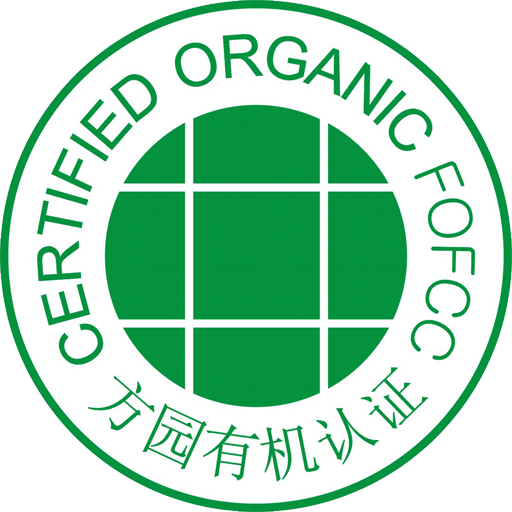![]() 文章源自FOFCC-http://fofcc.org.cn/en/show/11875.html
文章源自FOFCC-http://fofcc.org.cn/en/show/11875.html
Good Agricultural Practices (GAP) is an acronym for Good Agricultural Practices, which, in a broad sense, is a methodology and system of applying Good Agricultural Practices (GAP) to safeguard food safety and food quality through economically, environmentally, and socially sustainable development measures. Control of microbiological hazards common to the growing, harvesting, washing, handling, packaging and transport of most fruits and vegetables that are sold unprocessed and in the simplest form (raw) to consumers and processors, and is concerned with the production and packaging of fresh fruits and vegetables, but is not limited to the farm and encompasses all the steps of the entire food chain from the farm to the table.文章源自FOFCC-http://fofcc.org.cn/en/show/11875.html
GB/T 20014.2-2013 Good Agricultural Practice Part 2: Crop-based control points and compliance specifications
GB/T 20014.3-2013 Good Agricultural Practice Part 3: Crop base control points and conformity specifications
GB/T 20014.4-2013 Good Agricultural Practice Part 4: Crop base control points and conformity specifications for field crops
GB/T 20014.5-2013 Good Agricultural Practice Part 5: Control Points and Conformity Specifications for Fruit and Vegetables
GB/T 20014.6-2013 Good Agricultural Practice Part 6: Livestock and Poultry Basis Control Points and Conformity
GB/T 20014.7-2013 Good Agricultural Practice Part 7: Control Points and Conformity Specification for Cattle and Sheep
GB/T 20014.8-2013 Good Agricultural Practice Part 8: Control Points and Conformity Specification for Dairy Cattle
GB/T 20014.9-2013 Good Agricultural Practice Part 9: Control Points and Conformity Specification for Swine
GB/T 20014.10-2013 Good Agricultural Practice Part 10: Control Points and Conformity for Poultry
GB/T 20014.11-2005 Good Agricultural Practice Part 11: Control Points and Conformity Specification for Road Transport of Livestock and Poultry
GB/T 20014.12-2013 Good Agricultural Practice Part 12: Control Points and Conformity Specification for Tea
GB/T 20014.13-2013 Good Agricultural Practice Part 13: Basic control points and compliance for aquaculture
GB/T 20014.14-2013 Good Agricultural Practice Part 14: Basic control points and compliance specifications for aquaculture ponds
GB/T 20014.15-2013 Good Agricultural Practice Part 15: Basic control points and compliance specifications for aquaculture factory farming
GB/T 20014.16-2013 Good Agricultural Practice Part 16: Basic control points and conformity specification for aquaculture in net tanks
GB/T 20014.17-2013 Good Agricultural Practice Part 17: Basic control points and compliance specifications for aquaculture in pens
. GB/T 20014.18-2013 Good Agricultural Practice Part 18: Basic control points and compliance specifications for aquaculture in mudflats, suspended aquaculture and bottom-seeding
GB/T 20014.19-2008 Good Agricultural Practice Part 19: Specification for control points and compliance for tilapia pond aquaculture
GB/T 20014.20-2008 Good Agricultural Practice (GAP) Part 20: Specification for control points and compliance for eel pond culture
GB/T 20014.21-2008 Good Agricultural Practice (GAP) Part 21: Specification for shrimp pond culture control points and compliance
GB/T 20014.22-2008 Good Agricultural Practice Part 22: Control Points and Conformity Specification for Turbot and Flounder Factory Farming
GB/T 20014.23-2008 Good Agricultural Practice Part 23: Control Points and Conformity Specification for Net-pen Aquaculture of Yellow croaker
GB/T 20014.24-2008 Good Agricultural Practice Part 24: Specification for control points and compliance for pen culture of Chinese mitten crab
GB/T 20014.25-2010 Good Agricultural Practice Part 25: Control Points and Conformity Specification for Flowers and Ornamental Plants
GB/T 20014.26-2013 Good Agricultural Practice Part 26: Control Points and Conformity Specification for Tobacco
GB/T 20014.27-2013 Good Agricultural Practice Part 27: Control Points and Conformity Specification for Honeybees
Benifits of Certfication文章源自FOFCC-http://fofcc.org.cn/en/show/11875.html
- Through GAP certification, the standardisation level of agricultural production can be enhanced, which is conducive to improving the intrinsic quality and safety level of agricultural products, and enhancing consumer confidence.
- After China's accession to the World Trade Organisation, GAP certification has become an important condition for the import and export of agricultural products, and China-GAP has reached a mutual recognition agreement with Global-GAP, so that products certified by GAP will have stronger competitiveness in domestic and international markets. Good Agricultural Practices (GAP) allows for the conditional and reasonable use of synthetic chemical substances, and its certification is widely recognised internationally. Therefore, Good Agricultural Practice (GAP) certification can implement agricultural standardisation at the operational level, thereby improving the competitiveness of China's conventional agricultural products in the international market and promoting the export of certified agricultural products.
- Products certified by GAP have a higher selling price than non-certified similar products, so GAP certification can enhance the added value of the products, thus increasing the income of certified enterprises and producers.
- Through GAP certification, it is conducive to enhancing the producers' awareness of safety and environmental protection, which is conducive to protecting the health of workers.
- Through GAP certification, it is conducive to the protection of the ecological environment and the increase of biodiversity in nature, which is conducive to the ecological balance of nature and the sustainable development of agriculture.



